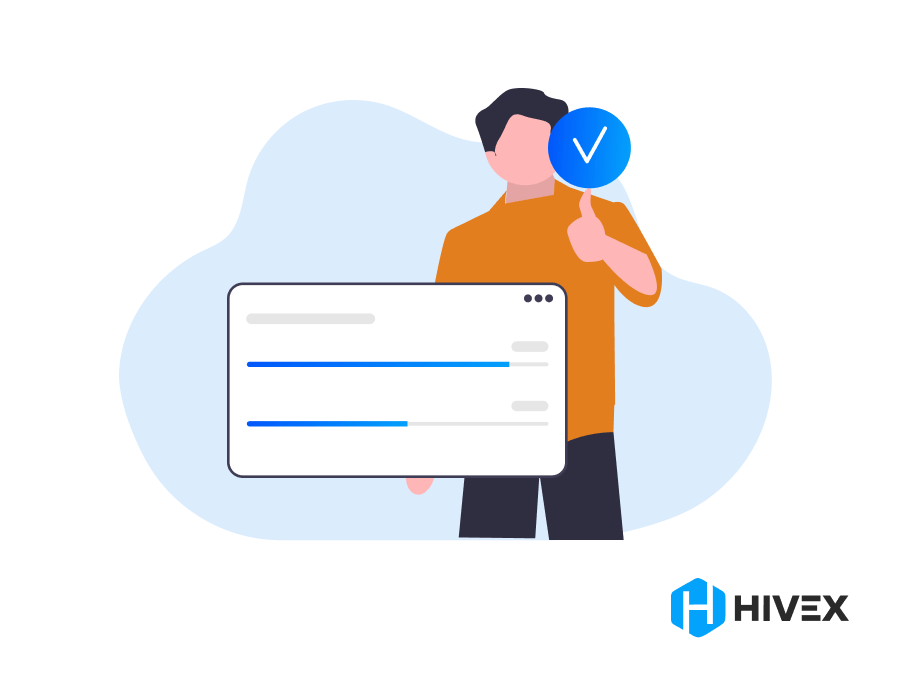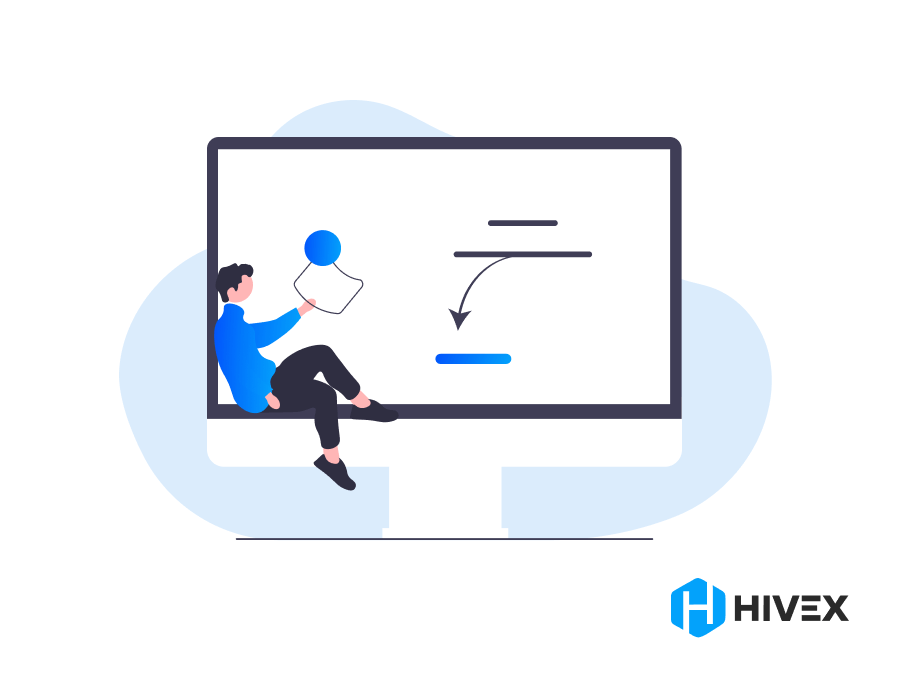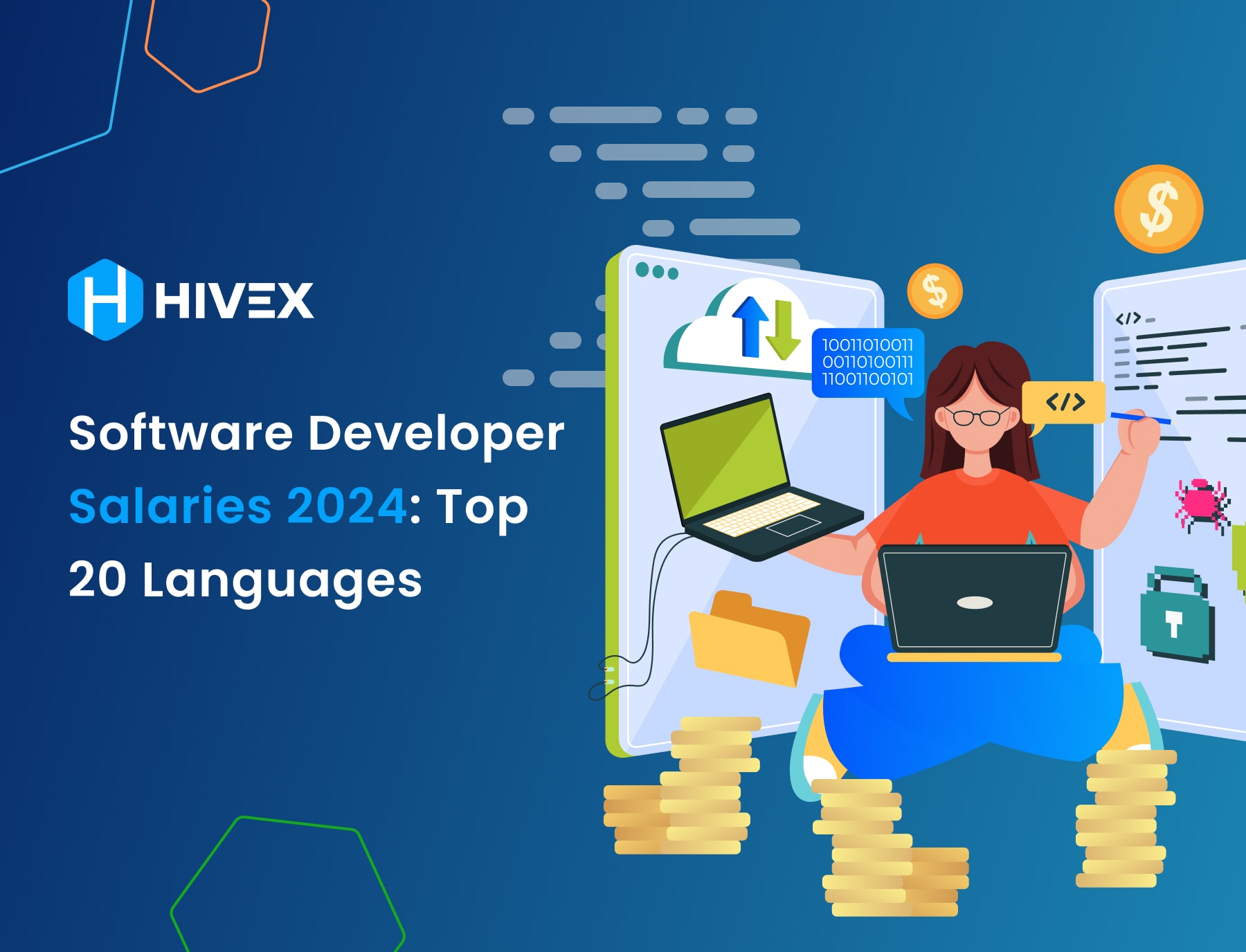Software Developer Onboarding Checklist: The Ultimate Guide

As a manager, you know how important it is for new hires to have a well-structured onboarding process. It sets the tone for a developer’s experience with your company and can greatly impact their productivity and overall satisfaction. In this article, we will explore the key components of an effective software developer onboarding checklist and provide tips for the successful onboarding of remote developers.
Table of Contents
Why a Well-Structured Onboarding Process Matters
Glassdoor study revealed that organizations with a strong employee onboarding process improve new hire retention by 82%, and productivity by 70%.
Effective onboarding is crucial for new software developers, as it helps them familiarize themselves with your company’s culture, processes, and expectations.
It sets the foundation for their success and integration into your development team.
If you don’t have a solid onboarding process, new hires may feel overwhelmed, disengaged, and struggle to perform at their best.
A comprehensive onboarding process ensures new developers understand their roles, responsibilities, and objectives from the start.
The outcome?
It helps them get up to speed quickly, promotes a sense of belonging, and reduces turnover.

Let’s take a look at its benefits in a nutshell:
Collaborative Relationships
One of the key benefits of well-structured onboarding is that it helps new developers build strong relationships with their colleagues.
By providing opportunities for new hires to interact with team members, whether through team-building activities or one-to-one meetings, you encourage teamwork. This not only enhances their overall job satisfaction but also encourages knowledge-sharing and innovation within the team.
Talent Retention
The right onboarding can also help retain top talent. New developers are more likely to stay with your company if they feel supported and valued from the start.
This reduces the costs associated with turnover and allows you to build a stable and high-performing development team.
Filling Skills Gaps
The onboarding process can help you identify any gaps in the new developer’s skills or knowledge early on.
By providing them with the necessary training and resources, you can address these gaps and ensure that they have the tools they need to succeed. This proactive approach not only benefits the individual developer but also strengthens your team’s overall capabilities.
A well-structured new developer onboarding process is essential for the success of a new employee (particularly for junior developers). It not only helps them acclimate to your company’s culture and expectations but also fosters strong relationships, promotes retention, and identifies areas for growth.
By investing in a comprehensive onboarding process, you invest in the long-term success of your development team.
You may also like: How to Optimize Costs for Hiring Remote Developers

Developer Onboarding Process in Stages
Onboarding software developers remotely requires some additional considerations compared to onboarding in-office developers.
Without direct physical interaction, it’s important to create a structured developer onboarding plan that helps remote employees feel connected and supported from day one.
Let’s break the onboarding program down into stages:
- Pre-onboarding: Before the developer’s first day, send them a warm welcome letter, an overview of what to expect on their first day, and any necessary information or resources they need to set up their work environment.
- First day: On the developer’s first day, schedule a video call to welcome and introduce them to the team. Provide an overview of the company, its values, and goals. Assign them a mentor or buddy who can guide them through their onboarding process.
- First week: Familiarize remote developers with your development processes, tools, and systems. Provide access to the necessary software and documentation. Assign them small, achievable tasks that allow them to adapt to the team’s workflow and processes.
- First month: At the end of the first month, remote developers should have a clear understanding of their roles and responsibilities. Assign them more challenging tasks and encourage them to actively collaborate with the rest of the team.

During the pre-onboarding process:
Provide clear instructions for setting up their work environment, including information on necessary software and hardware. Providing a digital employee handbook and technical documentation ahead of time helps new team members, particularly junior developers, to hit the ground running from their first day.
On the first day:
Conduct a video call to establish a personal connection with a new developer. This is a great opportunity to share technical documentation and introduce the company culture. Invite a new hire’s mentor (typically a senior developer), who will guide new team members through the working processes and the company’s values and goals, aligning them with the team’s mission and vision.
During the first week:
Equip remote developers with essential resources. Ensure they have access to development tools, software documentation, and task management tools, as well as any necessary internal communication channels.
Providing login details promptly helps them integrate more efficiently into the team, allowing them to contribute to their first project. This approach not only facilitates a smooth onboarding process but also helps in identifying any key bottlenecks early on.
During the first month:
Increase the complexity of tasks assigned to remote developers. Introduce them to pair programming sessions with other team members, fostering collaboration and skill demonstration.
This onboarding phase should align with the company’s coding standards and normal working hours, ensuring the new team member feels part of the team dynamic.
Encouraging active participation and open communication not only makes remote developers feel valued and engaged but also solidifies their integration into the team.
By carefully navigating these stages, you create a comprehensive remote onboarding process that sets remote developers up for success.
Next, let’s discuss each stage of the developer onboarding plan in more detail.

Pre-Onboarding Checklist
The pre-onboarding process sets the foundation for a seamless onboarding experience.
Here are some steps to consider:
- Send a welcome message to new hires before their first day, providing information about the onboarding process
- Share details about the work environment to help new developers feel prepared
- Provide any necessary paperwork that needs to be completed before the first day
- Share information about the company’s culture, values, and mission to help new hires feel aligned with the organization
- Outline any required training or certifications that should be completed before the start date
- Assign a point of contact to address any pre-onboarding questions or concerns.
By following these steps, you can ensure that new developers have a clear understanding of what to expect and feel prepared to start their journey with your company.
Checklist: First Day
The first day of onboarding sets the tone for a developer’s experience at your company, so make sure the new employee gets off to a smooth start.
Here’s a first-day checklist:
- Warmly welcome the developers and introduce them to the team
- Provide an overview of the company’s mission, vision, and values
- Explain the developer’s role, responsibilities, and goals
- Provide access to the necessary tools, software, and documentation
- Assign them a mentor or buddy to support them throughout their onboarding
- Schedule regular check-ins to address any questions or concerns they may have
New Hire Announcement
On the first day, it’s crucial to make the new employee feel like an integral team member.
Take the opportunity to introduce them individually to other team members, sharing brief insights into each person’s role and expertise. This approach not only eases the new team members into the team but also fosters collaboration from the outset.
Introduction to the Company Culture
Provide an overview of the company’s mission, vision, and values, sharing success stories or recent achievements. Such stories help the new hire feel motivated to be a part of the company’s ongoing success.
When discussing the new employee’s role, responsibilities, and objectives, use specific examples and real-life scenarios. This helps them visualize their role in the larger context of company workflows, offering a clear picture of the expectations set for them.
Necessary Tools and Software
Provide access to the necessary documentation, tools, and software and explain how these resources are used within the company. Offering a brief tutorial or demonstration can help the developer quickly get up to speed and start contributing effectively.
Assigning a Team Lead
Assigning a team lead or mentor to the new developer is an excellent way to provide ongoing support and guidance.
This person can answer questions, provide insights, and offer advice based on their own experiences. Regular check-ins with the team lead ensure the developer feels supported and can address any concerns or challenges they may encounter.
Remember, the first day is just the beginning of the developer’s journey with your company.
Following this checklist and making them feel welcome and supported will set up a successful onboarding experience and long-term, productive relationship.

Checklist: First Week
During week one, it’s important to familiarize developers with your company’s development processes, tools, and systems.
Checklist for the first week:
- Introduce the developer to your company’s project management or issue-tracking system
- Explain your team’s coding standards, version control practices, and code review process
- Provide access to any necessary development environments or servers.
- Assign them small, achievable tasks that help them understand the team’s workflow and processes
- Encourage them to actively seek help and collaborate with other team members
- Schedule regular one-on-one meetings to assess progress and provide feedback
Now that you have a checklist to guide you through week one, let’s dive deeper into each item to ensure a smooth onboarding experience for your new developer.
Introduction to the PM and issue-tracking system
Introduce the developer to your company’s project management or issue-tracking system. This will help them keep track of tasks, prioritize work, and collaborate effectively with the team.
Take the time to explain the different features and functionalities of the system, ensuring they understand how to navigate and utilize it efficiently.
Coding Standards
Provide a comprehensive explanation of your team’s coding standards, version control practices, and code review process.
These guidelines ensure consistency and maintainability in the codebase. Walk the developer through the coding standards, highlighting any specific conventions or best practices your team follows.
Explain the version control system your team uses and how to create branches, commit changes, and merge code. Lastly, emphasize the importance of code reviews and how they contribute to the overall quality of the codebase.
Development Environments and Servers
Grant access to the necessary development environments or servers. This enables them to set up their development environment, deploy code, and test their changes.
Provide clear instructions on how to access these environments and any relevant credentials or permissions they may need.
First Task Assignment
Assigning small, achievable tasks is an effective way to help the new developer understand the team’s workflow and processes. These tasks should be designed to gradually introduce them to the codebase and the team’s development cycle.
Start with manageable tasks, so that your new hire can gain confidence and build a solid foundation for future work.
Encourage Collaboration
Encouraging the new employee to actively seek help and collaborate with other team members is vital for integration into the team. To facilitate this, ask a team lead to schedule one-on-one meetings with the new hire so that their challenges or questions can be discussed.
Foster a supportive environment where questions are encouraged and knowledge sharing is valued. This approach nurtures the manager-employee relationship and reinforces the company culture of collaboration and mutual support.
Regular Meetings
Schedule regular one-on-one meetings with the new developer to assess progress and provide feedback.
These meetings offer an opportunity to address any concerns, provide guidance, and ensure that the onboarding process is proceeding smoothly.
It’s also a chance to understand the developer’s goals and aspirations, allowing you to align their work with their professional growth.
With this expanded checklist and detailed explanations and guidance, you will give your new developer a great start.

Checklist: First Month
By the end of the first month, software developers should have a solid understanding of their roles and responsibilities within your company.
Here’s a checklist for the first month:
- Assign developers more challenging tasks that align with their skills and goals
- Encourage active participation in team meetings and discussions
- Provide opportunities for professional growth, such as training sessions or conferences
- Schedule regular performance reviews to provide feedback and address concerns
- Ensure developers have access to the resources and support needed to succeed
- Recognize and celebrate milestones or achievements during their first month
Increasing Task Complexity
During the first month, it is crucial to establish a strong foundation for your developers.
By assigning them more challenging tasks that align with their skills and goals, you are not only pushing them to grow but also showing them that you have confidence in their abilities. This will motivate a new hire to be productive and contribute to the success of your projects.
Active participation in team meetings and discussions is another key aspect of the first month. Encouraging developers to share their ideas, ask questions, and engage in meaningful conversations will foster a sense of belonging and collaboration within the team.
It will also help them gain a deeper understanding of the project objectives and contribute valuable insights to the software development process.
Creating Learning Opportunities
Professional growth is essential for developers to stay up-to-date with the latest technologies and industry trends.
Providing opportunities for training sessions or conferences not only enhances their skills but also demonstrates your commitment to their development.
By investing in their growth, you are investing in the long-term success of your team and company.

Regular Performance Reviews
Regular performance reviews are vital to the software developer onboarding process.
They ensure that every new hire receives timely feedback and has a platform to address any concerns.
Setting a specific performance review meeting date and conducting regular one-to-one meetings are effective ways to collect feedback and identify key bottlenecks in their development.
Remember, these discussions should be constructive, focusing on both strengths and areas for improvement.
Create an open and supportive environment in these interactions to help your new hires thrive and overcome any challenges they may encounter in their role.
Support and Resources
Access to resources and support is crucial for developers to succeed in their roles.
Whether it’s providing them with the necessary tools, documentation, or mentorship, ensuring they have everything they need will enable them to work efficiently and effectively.
Regularly check in with them and address any obstacles they may be facing to ensure their success.
Achievement Recognition
Recognizing and celebrating milestones or achievements during their first month is a great way to motivate and appreciate your developers.
Whether it’s a small accomplishment or a major milestone, acknowledging their efforts and contributions will boost their morale and foster a positive work environment.
This will not only make them feel valued but also encourage them to continue striving for excellence.
Download Your Free Onboarding Checklist
There are a lot of steps in onboarding, so you’d like everything in one place, right?
Download Your Developer Onboarding Plan Here!

Providing Feedback and Monitoring Progress
Monitoring new developers’ progress and providing constructive feedback is essential to their growth and success.
Regular check-ins and feedback sessions help identify any areas where further support or training may be required.
Here are some effective ways to implement these developer onboarding best practices:
- Schedule regular one-on-one meetings to discuss progress, address questions or concerns, and provide guidance
- Encourage open and honest communication, allowing developers to voice any challenges or difficulties they may be facing
- Create a positive environment that fosters continuous learning and improvement
- Provide specific and actionable feedback that focuses on both strengths and areas for improvement
- Recognize and celebrate achievements to boost morale and motivation
During the onboarding process, it is crucial to establish a strong foundation for new developers.
Set clear expectations and goals right from the start.
Outline what is expected of them and what they can expect from the company.
Provide resources and training materials.
Offer access to online courses, tutorials, and documentation.
This not only empowers developers to take ownership of their learning but also demonstrates the company’s commitment to their professional development.
Create a culture of continuous improvement.
Encourage developers to collect feedback from their peers and mentors.
Foster a collaborative environment where everyone invests in each other’s success.
Conduct regular team meetings, code reviews, and knowledge-sharing sessions.
Remember that onboarding is not a one-size-fits-all process. Each developer is unique and may require different levels of support and guidance.
By adapting and tailoring the onboarding experience to individual needs, you can ensure that new developers feel valued and supported from day one.
Conclusion
Establishing a well-structured onboarding is essential for the successful integration and productivity of new software developers.
Whether you’re onboarding remote employees or in-office staff, it is a critical phase for both junior and experienced developers.
By meticulously following our comprehensive checklist, you can ensure that new developers feel thoroughly supported, empowered, and equipped from their very first day.
Providing clear and detailed developer onboarding documentation and an employee handbook tailored to remote work nuances helps bridge any gaps caused by physical distance. Despite geographic differences, this approach strengthens the corporate culture and fosters a sense of belonging.
Regular check-ins, mentoring programs, and team-building activities can bridge gaps, ensuring that every new developer feels a part of the team. This not only boosts morale but also drives productivity and innovation.
Investing time and resources in a robust onboarding process pays dividends in the long run. It leads to higher employee satisfaction, better retention rates, and a more cohesive team.
Read also: Software Developer Hiring Process: 5 Fundamental Steps


